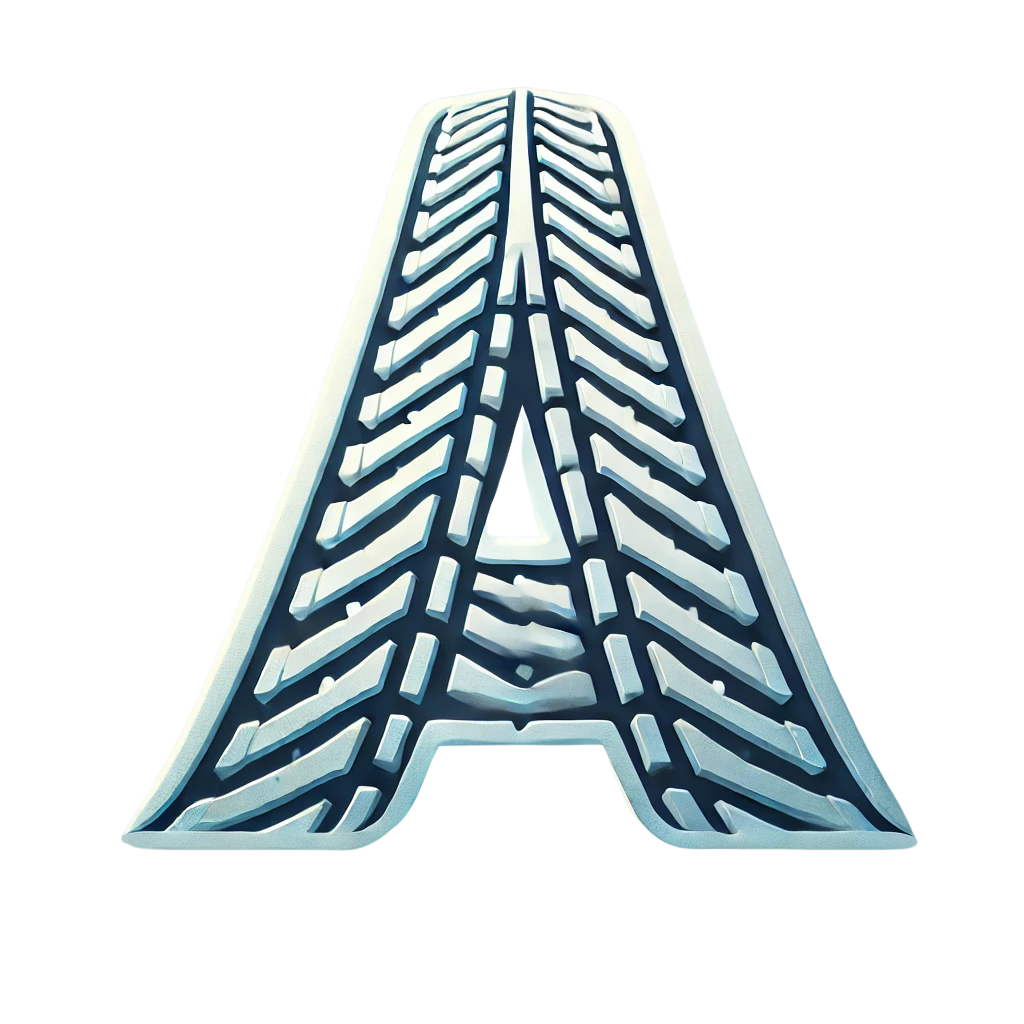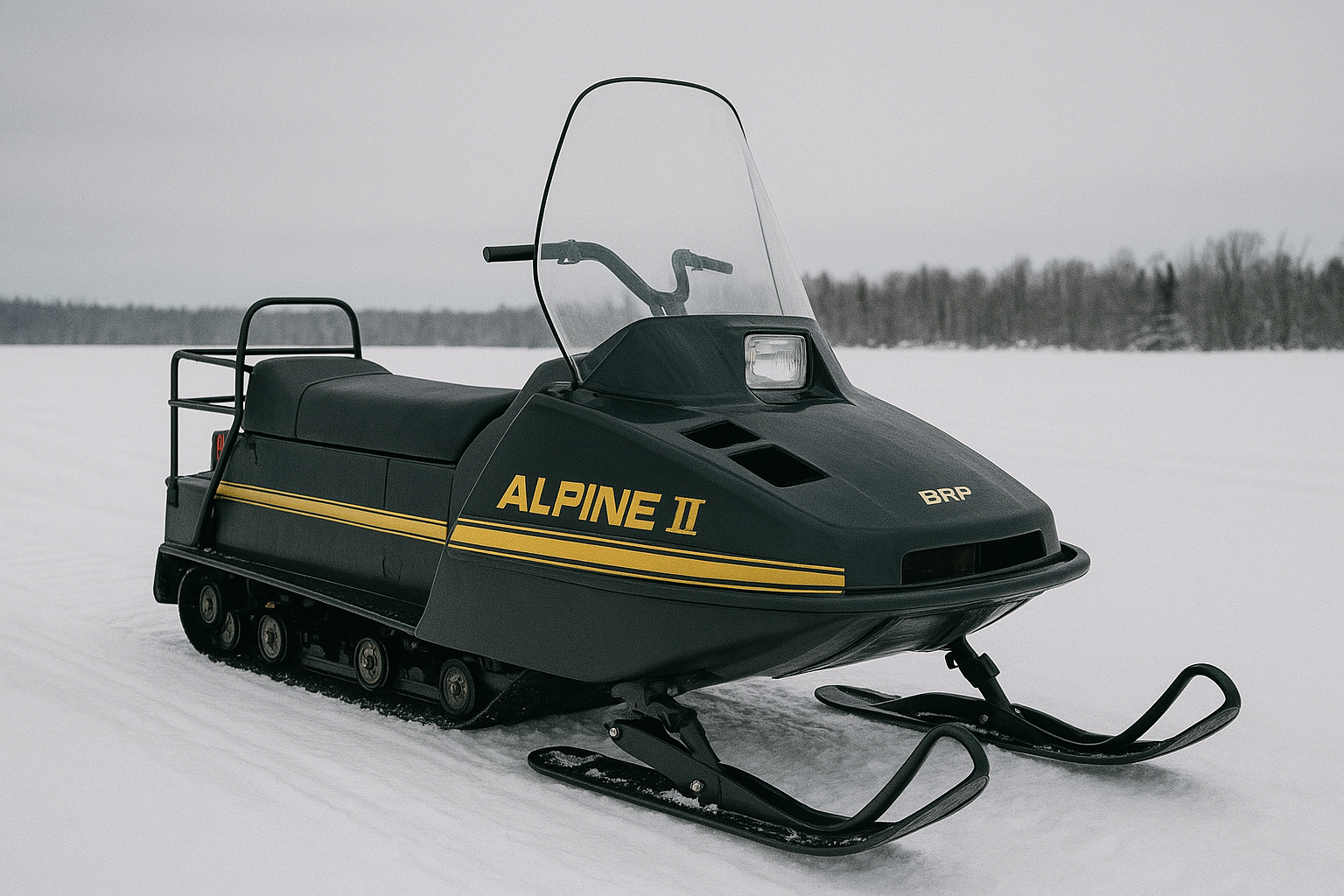The BRP Alpine II: A Legacy of Utility and Innovation
The BRP Alpine II snowmobile, produced under the Ski-Doo brand by Bombardier Recreational Products (BRP), stands as a testament to the evolution of utility snowmobiles. Introduced in the early 1970s, the Alpine II was designed to meet the demanding needs of professionals operating in harsh winter environments. Its robust construction and unique features set it apart from recreational models, making it a preferred choice for tasks requiring reliability and strength.
One of the defining characteristics of the Alpine II is its dual-track system. Unlike conventional snowmobiles that utilize a single track, the Alpine II employs two 15-inch wide rubber tracks reinforced with fiberglass rods. This configuration provides enhanced stability and traction, essential for hauling heavy loads and navigating challenging terrains. The single front ski design further contributes to its maneuverability, allowing for precise steering even in deep snow conditions.
Engine and Performance Specifications
At the heart of the Alpine II lies the Rotax 503 engine, a two-cylinder, fan-cooled powerplant known for its durability and consistent performance. With a displacement of 496.7 cm³, the engine delivers power efficiently across various operating conditions. The Mikuni VM 30-319 carburetor ensures optimal fuel-air mixture, contributing to the engine's reliability. The compression ratio is set at 6.3:1, and the engine achieves its maximum horsepower at 5,250 RPM, providing sufficient power for utility applications.
The transmission system of the Alpine II is designed for versatility and ease of use. It features a torque-sensing variable speed transmission with forward and reverse capabilities. This setup allows operators to adapt to different tasks and terrains seamlessly. The inclusion of a reverse gear is particularly beneficial when maneuvering in confined spaces or when towing equipment.
Chassis and Suspension
The Alpine II's chassis is constructed entirely from steel, ensuring structural integrity and longevity. Its overall dimensions—approximately 306.4 cm in length, 110.6 cm in width, and 147.3 cm in height—provide a substantial footprint, contributing to its stability. The snowmobile's weight is around 347 kg, which, combined with its large bearing area of 14,144 cm², results in a low ground pressure of approximately 2.45 kPa. This low ground pressure minimizes the risk of sinking into soft snow, enhancing its capability in various snow conditions.
The rear suspension utilizes a bogie wheel system with a travel of 4 inches, effectively absorbing shocks and maintaining track contact with the snow surface. This design ensures a smoother ride and consistent traction, which is crucial when transporting goods or navigating uneven terrains. The front ski is equipped with a double-action shock absorber, further improving ride comfort and handling.
Utility Features and Accessories
The Alpine II is equipped with several features that enhance its utility. A notable inclusion is the heavy-gauge steel cargo deck measuring 23.5 by 31 inches, capable of supporting up to 250 pounds. This cargo area allows operators to transport tools, supplies, or other equipment necessary for their tasks. Additionally, the snowmobile offers under-seat storage space of 1,564 cubic inches, providing secure storage for smaller items.
For year-round usability, BRP offered an optional wheel kit that could replace the front ski. This adaptation transformed the Alpine II into a versatile vehicle capable of operating on various surfaces beyond snow, such as dirt or grass. Such flexibility made it an invaluable asset for organizations requiring dependable transportation across different environments.
Operational Use and Legacy
Throughout its production run, the Alpine II became synonymous with reliability and functionality in professional settings. Its robust design and practical features made it a preferred choice for forestry operations, ski resort maintenance, and other industries requiring dependable winter transportation. The snowmobile's ability to tow equipment like groomer drags and rescue sleighs further cemented its role as a workhorse in demanding conditions.
The Alpine II's impact extended beyond its immediate applications. Its design influenced subsequent models and set a standard for utility snowmobiles. Even after production ceased, the Alpine II remained a respected and sought-after model among professionals and enthusiasts alike, a testament to its enduring quality and performance.

